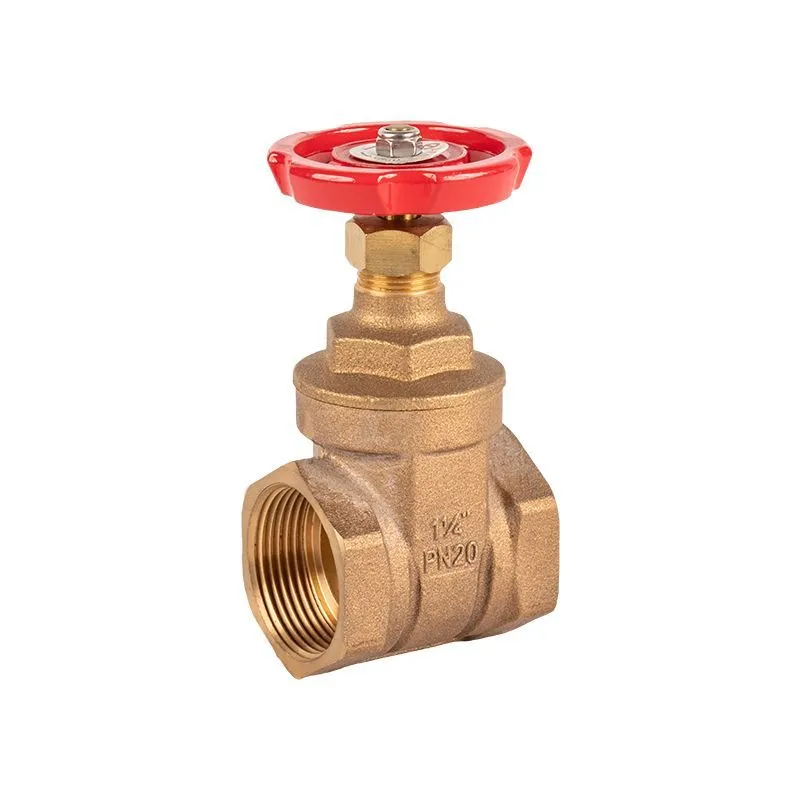The difference between brass valves and bronze valves can be literally distinguished from each other. We can know that the two valves are different in material. According to different compositions, copper alloys are divided into brass and bronze. Copper alloys are formed by adding certain alloying elements (such as zinc, tin, aluminum, beryllium, manganese, silicon, nickel, phosphorus, etc.) to pure copper. Copper alloy has good electrical conductivity, thermal conductivity and corrosion resistance, as well as high strength and wear resistance.
Brass is a copper alloy with zinc as the main alloying element. According to the chemical composition, brass is divided into two types: ordinary copper and special brass.
(1) Ordinary brass Ordinary brass is a binary alloy of copper and zinc. Due to its good plasticity, it is suitable for manufacturing plates, rods, wires, pipes and deep-drawn parts, such as condenser tubes, heat pipes and mechanical and electrical parts. Brass with an average copper content of 62% and 59% can also be cast and is called cast brass. (2) Special brass: In order to obtain higher strength, corrosion resistance and good casting performance, aluminum, silicon, manganese, lead, tin and other elements are added to the copper-zinc alloy to form special brass. Such as lead brass, tin brass, aluminum brass, silicon brass, manganese brass, etc. Lead brass has excellent cutting performance and good wear resistance. It is widely used in the manufacture of watch parts and is cast to make bearing bushes and bushings.
Tin brass has good corrosion resistance and is widely used in manufacturing marine ship parts. The aluminum in aluminum brass can improve the strength and hardness of brass and improve its corrosion resistance in the atmosphere. Aluminum brass is used to make corrosion-resistant parts. The silicon in silicon brass can improve the mechanical properties, wear resistance and corrosion resistance of copper. Silicon brass is mainly used to manufacture marine ship parts and chemical machinery parts.
2. bronze
Bronze originally refers to copper-tin alloy, but in industry it is customary to call copper alloys containing aluminum, silicon, lead, beryllium, manganese, etc. bronze, so bronze actually includes tin bronze, aluminum bronze, aluminum bronze, beryllium bronze, silicon bronze , lead bronze, etc. Bronze is also divided into two categories: pressure processed bronze and cast bronze.
(1)Tin bronze: A copper-based alloy with tin as the main alloy element is called tin bronze. The tin content of tin bronze used in industry is mostly between 3% and 14%. Tin bronze with a tin content of less than 5% is suitable for cold working; tin bronze with a tin content of 5% to 7% is suitable for hot processing; tin bronze with a tin content of more than 10% is suitable for casting. Tin bronze is widely used in shipbuilding, chemical industry, machinery, instrumentation and other industries. It is mainly used to manufacture wear-resistant parts such as bearings and bushings, elastic components such as springs, and anti-corrosion and anti-magnetic parts.
(2) Aluminum bronze: A copper-based alloy with aluminum as the main alloy element is called aluminum bronze. The mechanical properties of aluminum bronze are higher than those of brass and tin bronze. The aluminum content of aluminum bronze in practical applications is between 5% and 12%. Aluminum bronze containing 5% to 7% aluminum has good plasticity and is suitable for cold working. When the aluminum content is greater than 7% to 8%, the strength increases, but the plasticity decreases sharply, so it is mostly used in the cast state or after hot processing. The wear resistance of aluminum bronze and the corrosion resistance in the atmosphere, seawater, seawater carbonic acid and most organic acids are higher than those of brass and tin bronze. Aluminum bronze can be used to manufacture high-strength anti-wear parts such as gears, bushings, and worm gears, as well as high-corrosion-resistant elastic components.
(3)Beryllium Bronze Copper alloy with beryllium as the basic element is called beryllium bronze. The beryllium content of beryllium bronze is 1.7% to 2.5%. Beryllium bronze has high elastic limit and fatigue limit, excellent wear resistance and corrosion resistance, good electrical and thermal conductivity, non-magnetic properties, and no sparks when impacted. Beryllium bronze is mainly used to make important springs for precision instruments, clock gears, bearings and bushings that work under high speed and high pressure, as well as important parts such as welding machine electrodes, explosion-proof tools, and navigation compasses.


